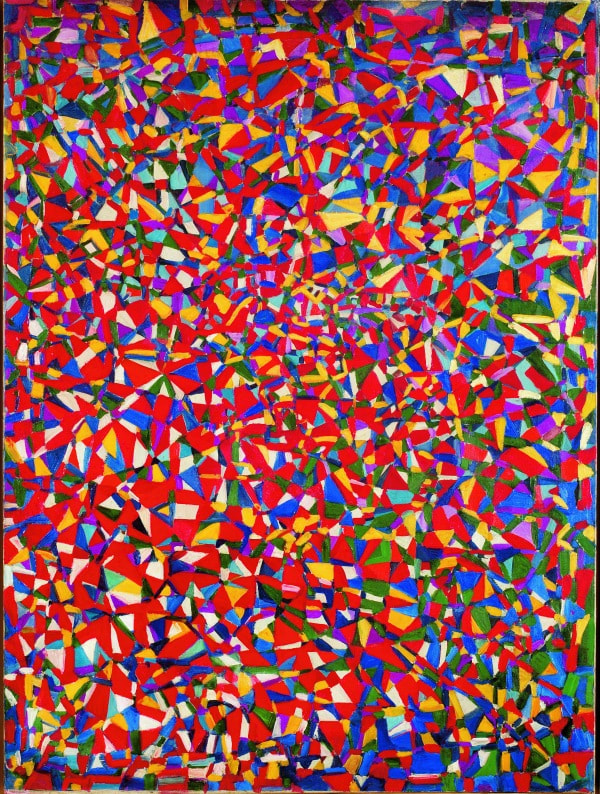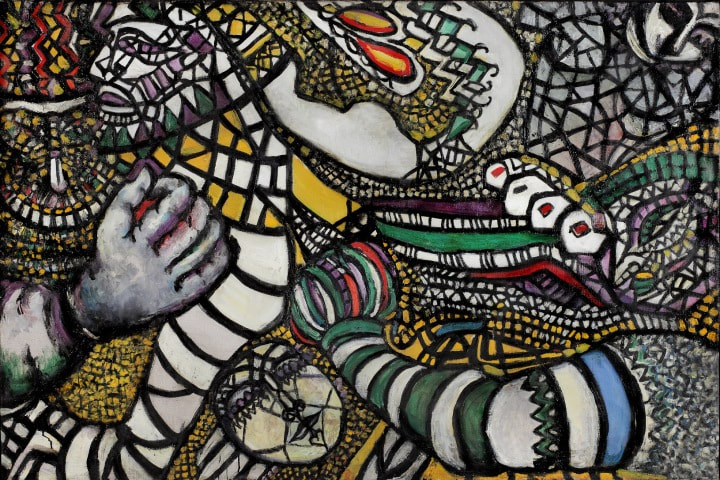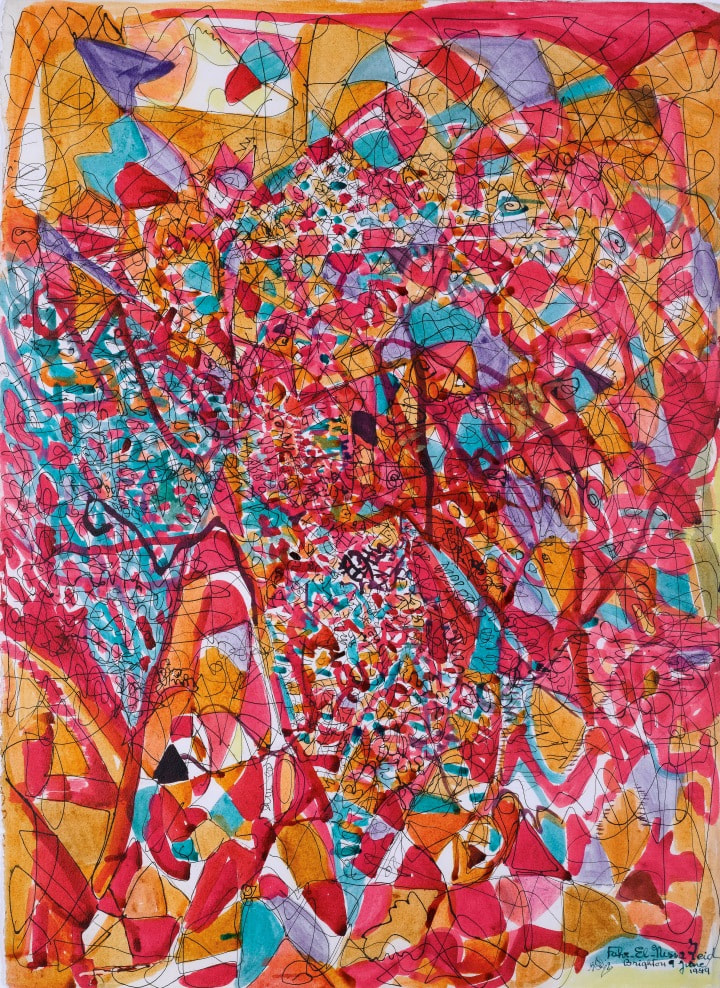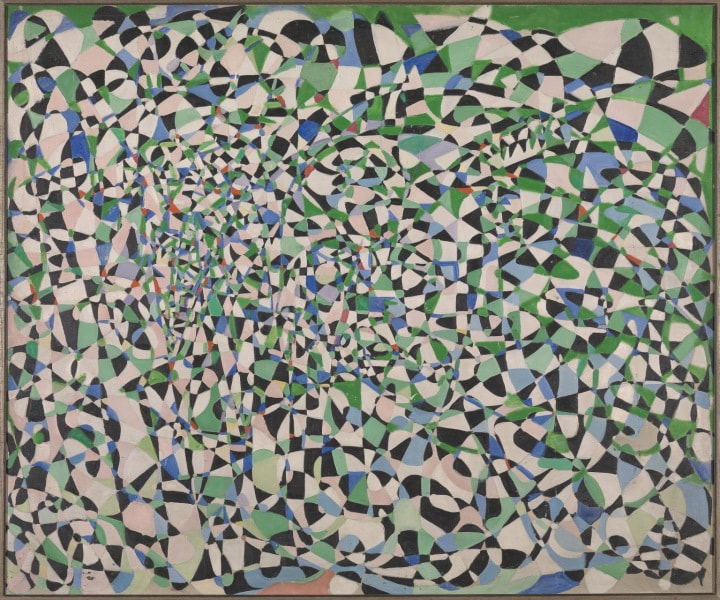|
One of the briefs I think of the big galleries is to introduce to artists you might not previously heard of. Before this year I had never heard of Fahrelinssa Zeid, but now I have and I am glad I have. This actually is one of the purposes of this blog. It provides me with a motivation to go out and see exhibitions, that I perhaps I wouldn’t do otherwise. It is also a good show to see if you have fortuitously just finished reading My Name is Red (which amusingly is on sale in the shop afterwards). It is on until 8th October. Zeid is an interesting woman, originally Turkish she married an Iraqi Prince who was ambassador to London. They were in Italy when the coup took place in Iraq and the rest of his family were massacred. A high society artist she was, rubbing shoulders with people such as the Queen Mother. Of her art I similarly knew nothing but the kaleidoscope on the poster appealed to me. I went on a quiet bank holiday Monday morning, padding around the exhibition virtually alone. Her work is usually very large. Inspired by stained glass and Muslim artistic traditions she is best known for the large multicoloured abstract pieces. They are sort of like larger spiky Sonia Delauney but with sharper less foggy colours. Multicoloured coloured geometric shapes edged with black. This is typified by the very good Fight against Abstraction (above), with its fist coming out of the shapes. There weren’t many pieces on display but they are very large and do really benefit from being in a large space as they do need to be seen from a distance. Close up they are interesting to but you feel a bit overwhelmed. My favourites of these very large pieces is Basel Carival, multicoloured with larger geometric shapes cutting into each other suggesting fair ground rounds and tents and little figures. It is a very attractive piece and I kept going back to it. For me her better pieces have the black in them. Earlier work is part figurative and part abstract. They often have several zones dominated by one colour and a strong geometric element such as Three ways of Living which has its arc of birds connecting two of the zones. One of the early pieces I liked was called Turkish baths with the calm blue of the baths contrasting nicely with the flesh tones. Her later work is more organic. There are some smaller pieces on paper. Washes of colour, mainly orange, scratched with black (like the above). Then two medium sized pieces called Fir and Shiran, mostly of one coloured, textured and “cut” with palette knife marks and other colours.
Two large later works really appealed to me. One called London the Fireworks I really liked and reminded me of Turner. Mainly yellow orange and gold crosses obscuring a murky black and blue London sky-line. A thoroughly engrossing work. This had been hung really well in that you could see it from two rooms away and beckoned you forward through the show. Next to it, more subtle and cooler was Sea Cave rendered mainly in blues and greens it felt very much like a sea cave. The final room had these sculptures made of chicken bones and Perspex which were quite good but vaguely repulsive. There were also portraits. Her portraits didn’t particularly appeal. The people are pretty featureless with big eyes. The best things about them are the patterned clothing such as the shawl in Sahid and the background as in the yellow that pops out behind Khadid Shah. Interestingly she sometimes signs her paintings using Arabic script which I think really adds to the paintings. I am glad I went and shall add Zeid to the 20th Centuary pantheon.
0 Comments
Leave a Reply. |
Archives
June 2024
Categories |







 RSS Feed
RSS Feed